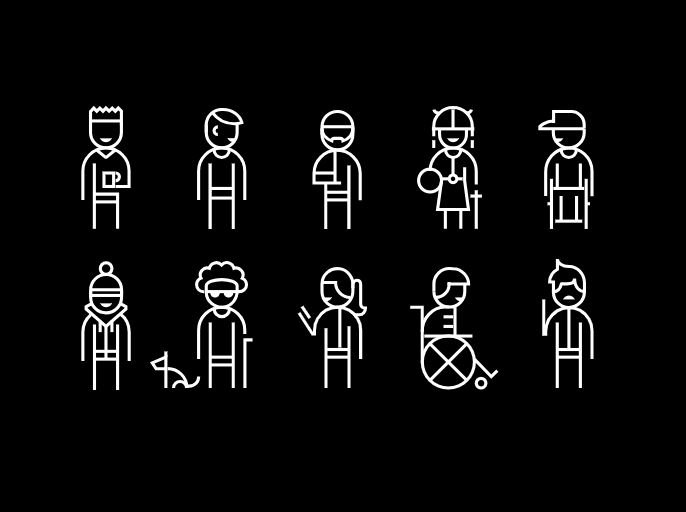Going Beyond the ADA for Accessibility and Inclusivity
Over a quarter of the U.S. population has a disability, and as we age, we’re more likely to acquire a disability. Additionally, many disabilities are not apparent to others, including neurodiversity, dyslexia, color blindness, severe allergic reactions, arthritis, mental health, and more. Designing with empathy includes designing for people with disabilities—seen and unseen.
The Americans with Disabilities Act (ADA) was passed on July 26, 1990—more than 30 years ago. The legislation was groundbreaking, providing civil rights protection for people with disabilities. The ADA also became a model for other countries to pass legislation. Its impact is formidable. But as many disability rights activists will tell you, the ADA is not enough. The legislation hasn’t been updated since 2008, is limited in scope, and is often not enforced. To create inclusion, we need to dig into empathy and go further. People and bodies are different, and inclusion looks slightly different for everyone.
Allison Zuck, a PGAV Project Leader and Architect, lives with an unseen disability. She was diagnosed with Crohn’s disease in her early 20s, underwent many surgeries, and now has an ileostomy. Zuck looks physically abled, but there are still many things that are difficult and situations where accommodations would allow her to feel more included. Zuck explained, “I avoided places that involved standing, like theme parks and museums. I would tire very easily, so standing in line was a challenge. Most line queues don’t have places to sit. I always had concerns about restroom accessibility—how many are there, where are they? It was always in the back of my mind.”
Zuck says there’s an extra mental load when planning visits to attractions or live events. Many places have bag size limits or don’t allow guests to bring in water. That isn’t easy when a guest needs to carry extra supplies or dehydrates easily. Zuck said, “It’s hard to be fully immersed in the moment when you’re worried about where I can sit or what happens if I get dehydrated and faint. And while I know my body better now, there’s still a lot of anxiety when there are insufficient accommodations.”
It can feel overwhelming to consider all the variances in disabilities. That’s where partnerships can be helpful. Instead of doing modeling exercises or simulations, seek out people with disabilities. Spend the day navigating your attraction with them. Bring them into the design process. There are many organizations and even bloggers that are available to help.
“Accommodations that are out of the way or single you out don’t make me feel included. I shouldn’t feel like I am put on display. I should be able to have the same experience,” Zuck said. For example, a ramp to the entrance at the back of the building isn’t as inclusive as making your main entrance accessible. All members of a party should be able to stay together.
Zuck explained, “It’s vital that we design spaces accessible to people with limited mobility, but it’s also vital to consider all aspects of disability. Through understanding and empathy, we can celebrate and include everyone in our designs.”
Resource and Example Links
Reinvention is more fun with friends. Got a topic you want to see on Destinology?
Email us at destinology@pgav.com or start a conversation on Facebook, Twitter on LinkedIn.
Tap the buttons below.














